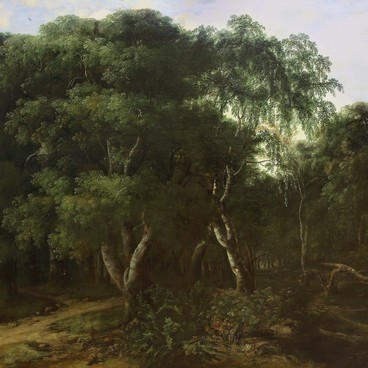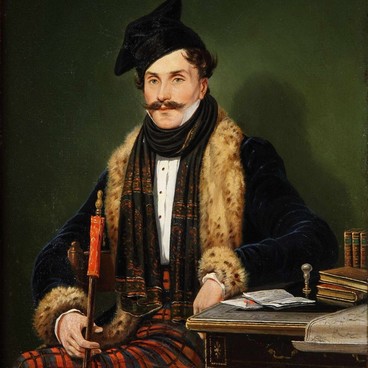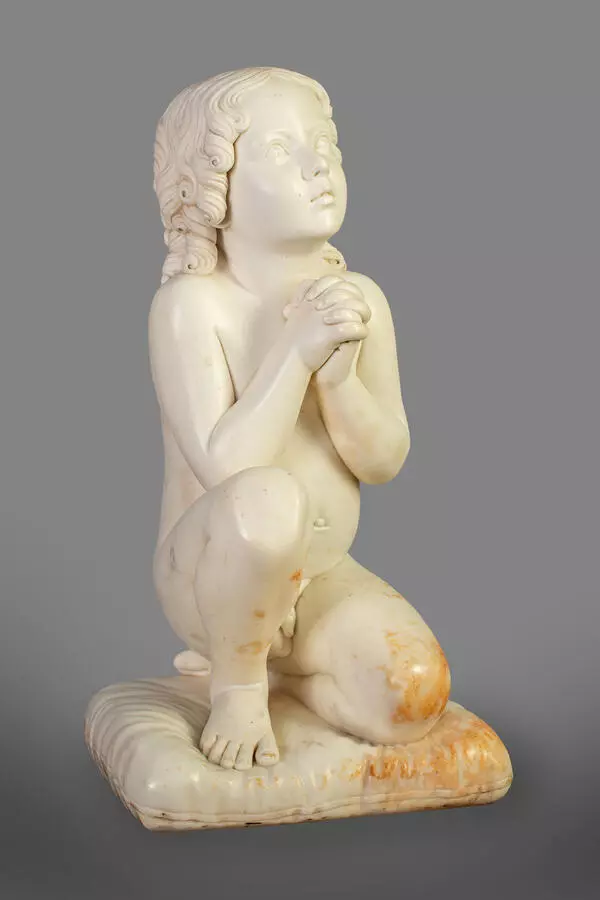The marble sculpture Samuel in Prayer was created by Italian artist Luigi Pampaloni in the 19th century. Art historians especially note his understanding of the material: the author managed to convey in solid stone the softness of child’s skin, the lightness of hair. The sculptor knew the anatomy well: he unmistakably conveyed proportions of the human body. The hands folded in prayer, knees, muscles look like real ones.
At the same time, the author carved out of marble not a portrait of a particular child, but a certain ideal image. This approach to sculpture roots back the ancient Greece. While the Romans most often created stone figures with all wrinkles and sharp recognizable features, the Greeks represented the perfect man in their statues: for example, marble copies of Discobolus or Doriffor do not represent particular athletes who actually lived once, but the generalized image of a handsome winning athlete. The appeal to ancient and classical traditions in the 19th century became known as the neoclassic style. Samuel in Prayer belongs to this direction.
Samuel is the name of a Christian prophet. According to the narrative of the Bible, he heard the voice of God in his infancy during a prayer. The voice called on him to become the prophet of Israel: to conduct a special sacred service and to tell people the will of the Lord. The second name of the sculpture is the Praying Boy.
It is believed that Pampaloni created the first version of the work on the request of a polish nobleman Frantisek Pototski. In the autumn of 1826 the artist demonstrated the Praying Boy to the general public. The statue has gained great popularity in many European countries, it was often copied. The Yaroslavl Museum of Fine Arts houses one of the versions created by Pampaloni himself.
At the same time, the author carved out of marble not a portrait of a particular child, but a certain ideal image. This approach to sculpture roots back the ancient Greece. While the Romans most often created stone figures with all wrinkles and sharp recognizable features, the Greeks represented the perfect man in their statues: for example, marble copies of Discobolus or Doriffor do not represent particular athletes who actually lived once, but the generalized image of a handsome winning athlete. The appeal to ancient and classical traditions in the 19th century became known as the neoclassic style. Samuel in Prayer belongs to this direction.
Samuel is the name of a Christian prophet. According to the narrative of the Bible, he heard the voice of God in his infancy during a prayer. The voice called on him to become the prophet of Israel: to conduct a special sacred service and to tell people the will of the Lord. The second name of the sculpture is the Praying Boy.
It is believed that Pampaloni created the first version of the work on the request of a polish nobleman Frantisek Pototski. In the autumn of 1826 the artist demonstrated the Praying Boy to the general public. The statue has gained great popularity in many European countries, it was often copied. The Yaroslavl Museum of Fine Arts houses one of the versions created by Pampaloni himself.





